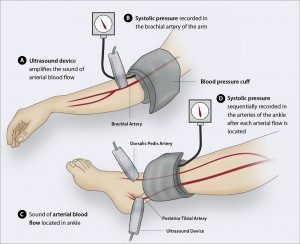ANCLE - BRACHIAL INDEX
 Ankle-Brachial Index (ABI) measurement is a simple, easily reproducible and accessible test that can accurately identify the presence of peripheral vascular disease. Peripheral vascular disease is a condition in which the arteries of the feet or hands are narrowed. Studies show that patients with peripheral angiopathy have an increased risk of heart attacks and strokes.
Ankle-Brachial Index (ABI) measurement is a simple, easily reproducible and accessible test that can accurately identify the presence of peripheral vascular disease. Peripheral vascular disease is a condition in which the arteries of the feet or hands are narrowed. Studies show that patients with peripheral angiopathy have an increased risk of heart attacks and strokes. - Smokers or former smokers over 50 years old
- Diabetics
- Patients with hypertension
- Those with elevated lipids
- People over 70 years old.
And of course patients reporting symptoms suspected of having peripheral vascular disease. These symptoms may be pain or cramping in the lower extremities during walking that disappears in rest (intermittent claudication). Even lower extremity wounds that are not easily healed or not at all. Cold lower extremities compared to the rest of the body.



